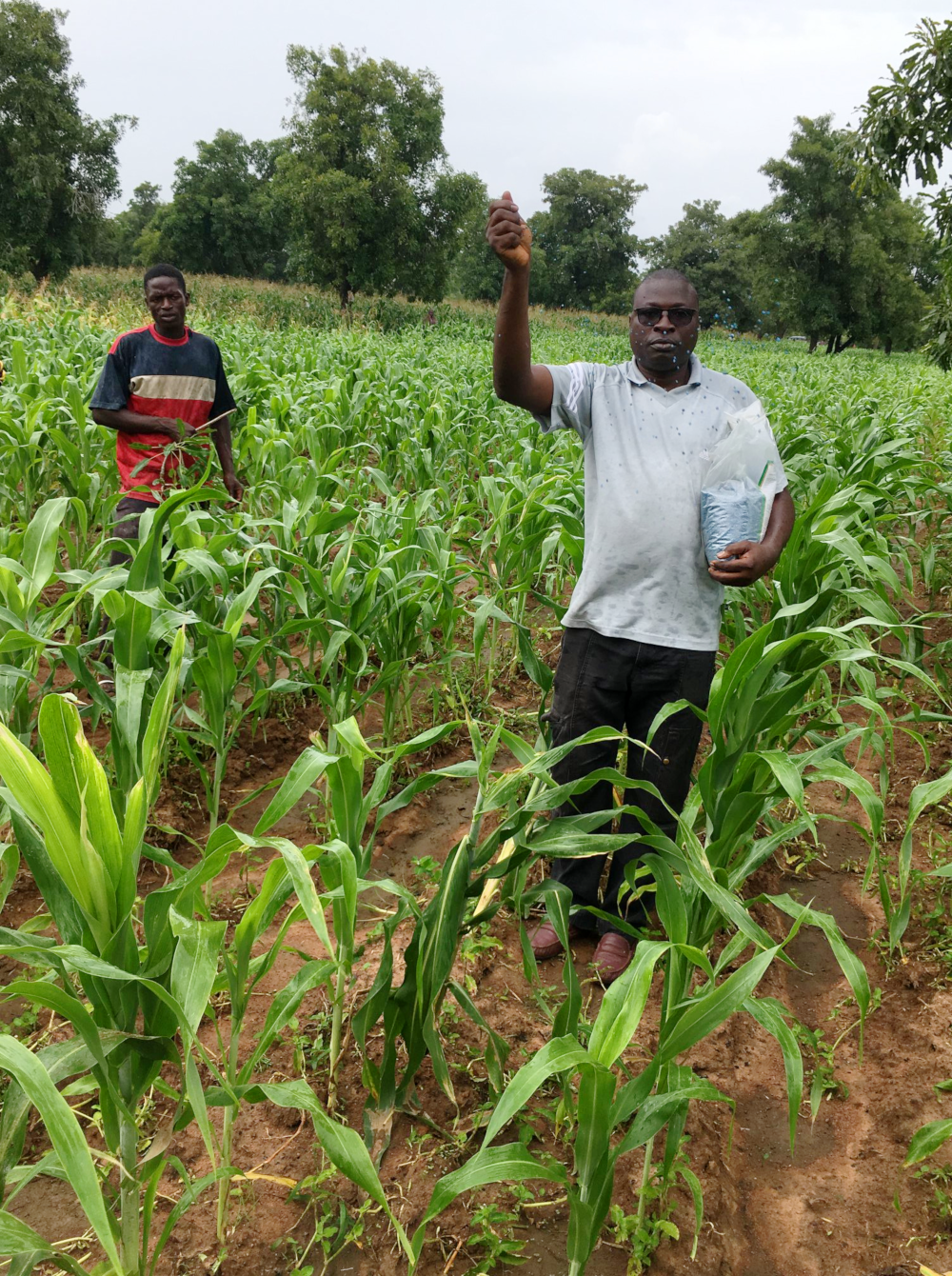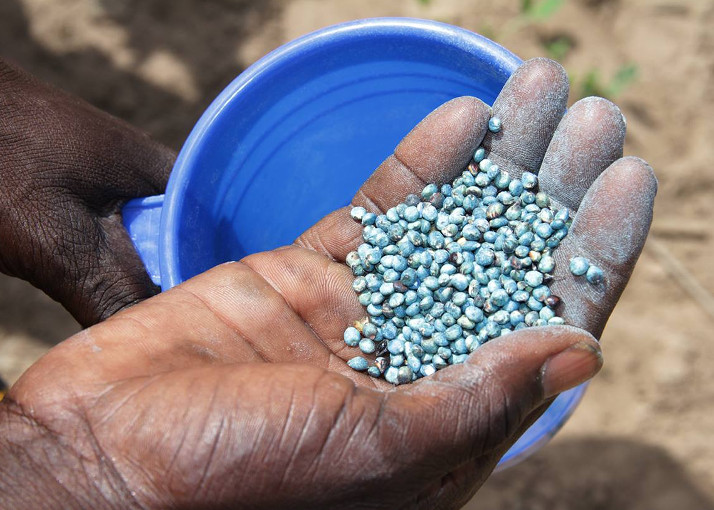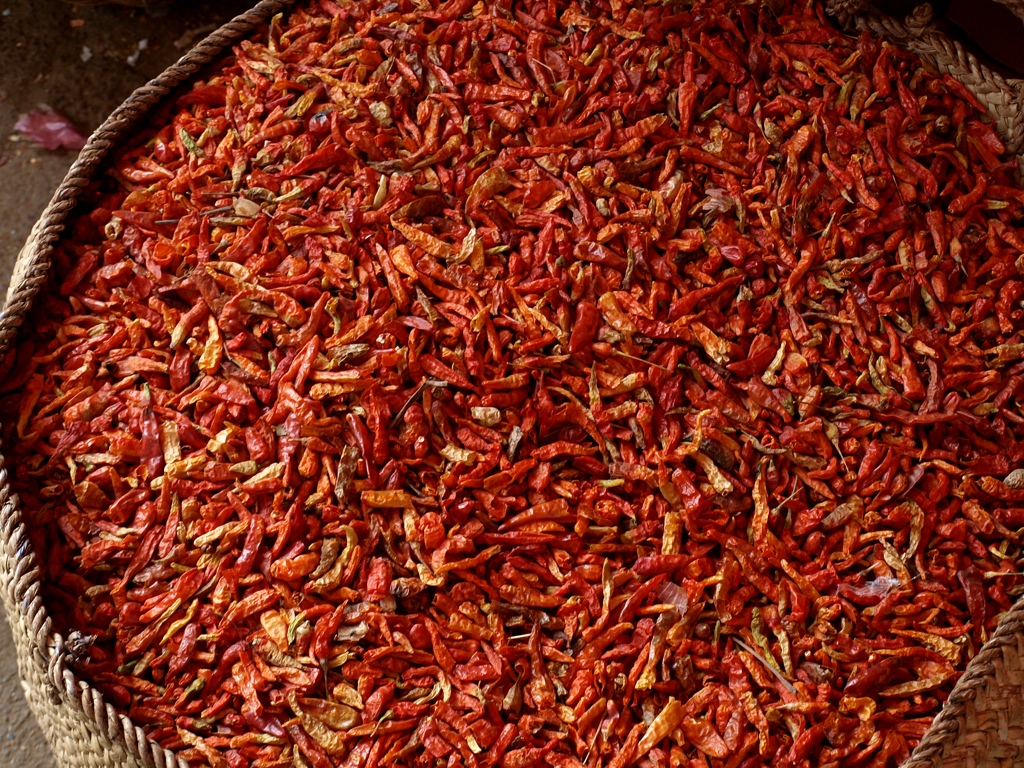
Aflasafe works to beat aflatoxin in food – but don’t just take our word for it! In fact, we can’t expect anyone to take our word from it, from farmers, to national regulatory authorities, to the pioneering companies commercialising Aflasafe as a product. That’s why a big part of our research and development (R&D) activities is meticulously testing and documenting how Aflasafe works – initially in the lab as we refine and develop each product, then in the field with farmers as we check performance under real-world conditions.
Across Africa, we’re gathering a huge body of evidence that Aflasafe is incredibly effective at cutting aflatoxin and making food safe, working reliably and well. We can communicate this evidence to interested partners, governments and potential Aflasafe users – and our commercialisation partners can use it too. As part of the scientific process, it also undergoes scrutiny by research peers for wider publication, and we are eventually able to present our full research results in the public domain.
Here we bring you momentous news from Mali and Rwanda as we test Aflasafe in fields there for the first time, plus a range of recent publications from the R&D team in our ever-expanding knowledge base.
Our team were thrilled to travel to Mali in September 2019. In antiquity, the city of Timbuktu was a renowned centre of learning, and there are still many more lessons to learn on Malian soil – and from the soil itself! For the very first time in Mali, we’ve kicked off trials of Aflasafe’s performance on the ground in farmers’ fields, which will generate bang-up-to-date information on the best ways to combat aflatoxin in the country’s groundnuts, maize and sorghum.

We’re conducting these efficiency trials in collaboration with Mali’s national Institut d’Economie Rural (IER), running the tests and analysing the results hand-in-hand. This work is funded by the Foreign Agricultural Service of the United States Department of Agriculture (USDA–FAS) and the Government of Norway’s Climate-Smart Agricultural Technologies for Mali (CSAT) Project.
On a total of 200 trial plots for this season, we are testing two existing products designed for contiguous countries, namely Aflasafe BF01 for Burkina Faso and Aflasafe SN01 for Senegal and The Gambia. For Aflasafe SN01, we are using part of a batch that was the first to be produced by our partner, BAMTAARE, in Senegal using our new easier and cheaper dry inoculum. Both products have already been officially approved for use in any of the 13 nations of the Sahel region by Le Comité Sahélien des Pesticides (CSP, the Sahelian Pesticides Committee) of Le Comité Permanent Inter-Etats de Lutte contre la Sécheresse dans le Sahel (CILSS, the Permanent Interstate Committee for Drought Control in the Sahel).
Not only are we testing the aflatoxin content of grain at harvest, comparing Aflasafe-treated and untreated plots, we are also measuring the amount of toxin-producing and toxin-fighting fungi in samples of grain, and of soil taken from the plots before Aflasafe treatment and at harvest. This will show us which of each product’s four active ingredients – different types (or strains, as scientists refer to them) of friendly fungi – are working the hardest. On past performance in other nations, we expect that either Aflasafe BF01 or Aflasafe SN01 – or both – will be highly effective against aflatoxin in different regions of Mali, enabling rapid commercialisation of these pre-existing off-the-shelf products. It’s also possible that a new ‘blend’ of ingredients drawn from the two products could be worth testing in future. With the trials established in September and harvest beginning in October, we hope to see some initial results by the end of 2019.
“Mali is one of the countries with the highest rates of liver cancer,” says Dr Alejandro Ortega-Beltrán, Plant Pathologist and Aflasafe’s technical leader for West Africa at IITA. “Organisations in Mali, such as farmer groups, are starting to demand a solution – as well as, for example, industry players that are losing money because they can’t meet aflatoxin standards. These tests are a crucial milestone on the way to commercialisation, and, once we have shown that Aflasafe really works on the ground and the product is made available, progress towards beating aflatoxin in Mali could be very rapid. We are likely to see Aflasafe use explode.”
“Our collaboration with IER has been excellent so far, and our personal relationships are wonderful,” enthuses Alejandro “It really shows the true spirit of Aflasafe, which we have seen emerge in other countries too, where everyone in the team becomes a family.”
In Rwanda, meanwhile, our R&D team have developed a new Aflasafe product for Rwanda, Aflasafe RW01, made up of native aflatoxin-fighting fungi. This too is being tested under field conditions for the first time in 2019, in collaboration with the Rwanda Agriculture Board. We’re delighted to note that Aflasafe has fantastic support from the Government of Rwanda, and we’re working on a commercialisation strategy for the country. We can’t wait to bring you more news on progress from both Mali and Rwanda as it unfolds.
Evidence from this kind of testing tends to take a long time to reach the public domain, as painstaking scientific publication pathways are long and thorough. However, we’re delighted to note that several papers have recently been published in prestigious journals by members of our R&D team and their collaborators, adding significantly to the scientific information available on Aflasafe in different countries and contexts – and helping to conclusively and objectively demonstrate that Aflasafe smashes aflatoxin effectively and reliably.
In Ghana, published in Frontiers in Microbiology, we’ve documented our discovery and characterisation of 12 distinct groups of non-toxin producing Aspergillus flavus – the fungus that both causes aflatoxin contamination and that we can send in to prevent it – a case of sending a thief to catch a thief if you like. We found that each individual strain cut aflatoxin contamination in treated groundnuts by 70–100%, and maize by 50–100%. This research has enabled us to select the most powerful toxin-beating performers and combine different groups in a single Aflasafe product, Aflasafe GH02, which was launched in 2018 and forms a key part of national anti-aflatoxin campaigns in Ghana. Our subsequent tests have shown that, with its four active ingredients working together, Aflasafe GH02 cuts aflatoxin contamination by 96–100%, more often than not reducing it right down to zero.

In Senegal, we followed a similar process, reported in Plant Disease, identifying 12 groups of non-toxin producing fungus and selecting four of the best toxin-beaters to combine in Aflasafe SN01. We then tested this product’s effectiveness in maize and groundnuts, in farmers’ fields in different locations during 2010–2014. At harvest, we found that Aflasafe SN01 cut aflatoxin levels by an average of 82–100%, except on one occasion where contamination was already low and a fall of just 58% brought it down to a safe level. The variability in the amount of aflatoxin in Aflasafe-treated crops was also much lower: aflatoxin levels were reliably low and almost always fell within safe limits. One of the huge advantages of Aflasafe is that it both works in the field and continues after harvest, protecting our food all the way from plot to plate. We therefore tested contamination again after a period in farmers’ own stores. Aflasafe SN01 reduced toxin levels by an average of 76–96%. In each case, the average amount was firmly in the safe zone, below 10 parts per billion (ppb), with the great majority of individual samples also falling within health-safe thresholds.
In a triple whammy from Nigeria, we bring you news of an incredible research hat trick that’s breaking new ground all over the landscape. In a frontier-smashing article in Frontiers in Microbiology, the team reports on a 10-year study on the effectiveness of Aflasafe™, the product tailored for Nigeria. This is the longest-running, most extensive research on any kind of product or practice to tackle aflatoxin. Analysis of more than 7,000 maize and groundnut samples from Aflasafe-treated fields showed that nearly 95% were very safe to eat, containing less than 10 ppb of aflatoxin. On average, Aflasafe™ cut contamination by more than 80%. What’s more, this poison-slashing power holds steady across different environments and farming systems, making Aflasafe™ a top-rack tool for protecting Nigeria’s staple foods.

But we’re not resting on our laurels; things are heating up as we branch out into a delicious new crop, with the first ever report on the effectiveness of Aflasafe or any similar product in a spice crop – chilli peppers – published in Toxins. Testing of chilli peppers from farmers’ stores and local markets in three Nigerian states showed that over 25% of samples contained high, unsafe amounts of aflatoxin. In our research, however, when we treated farmers’ fields with Aflasafe™ the peppers produced contained significantly less aflatoxin. In one state, Oyo, contamination levels were generally low so even the untreated peppers were safe, but in Kano and Nasarawa States, Aflasafe cut aflatoxin by 76% and 84% respectively. Aflasafe™ is already registered with the regulatory authorities and being successfully used in groundnuts and maize in Nigeria, and this work now shows that it has the potential to work extremely well in this hottest of foods too – keeping Nigerians even safer and potentially opening up new markets for growers and exporters.
In addition, we have exciting new evidence on the immense usefulness of Aflasafe for poultry producers. In research also published in Toxins and carried out in Nigeria, we found that broiler chickens fed on Aflasafe-treated maize performed better in every way that we measured, compared to chickens fed with aflatoxin-contaminated maize. For example, they were more productive – absorbing the nutrients in their feed more efficiently and growing faster – and they were healthier, with a lower mortality rate. The benefits of Aflasafe were also much greater than those of using an aflatoxin binder on contaminated feed, which did not fully counteract the toxin. Since poultry feeds manufactured and used in Nigeria tend to contain a large proportion of maize, often with a high aflatoxin content, Aflasafe offers a cost-effective way for producers to boost productivity and incomes.
We’ve been witnessing Aflasafe’s astounding performance throughout the years of research and development required for each product, but as we generate and make available more and more data on Aflasafe’s effectiveness, we’re delighted to now be able to shout it from the rooftops. The conclusion is clear: Aflasafe is a powerful and reliable solution to aflatoxin contamination, and we’re consolidating the evidence to show that, when used alongside good agricultural practices, Aflasafe effectively keeps Africa’s food safe from deadly aflatoxin.
LINKS
- Coverage from IITA News:
- Aflasafe R&D
- Keep up with the latest on Aflasafe in your country of interest










